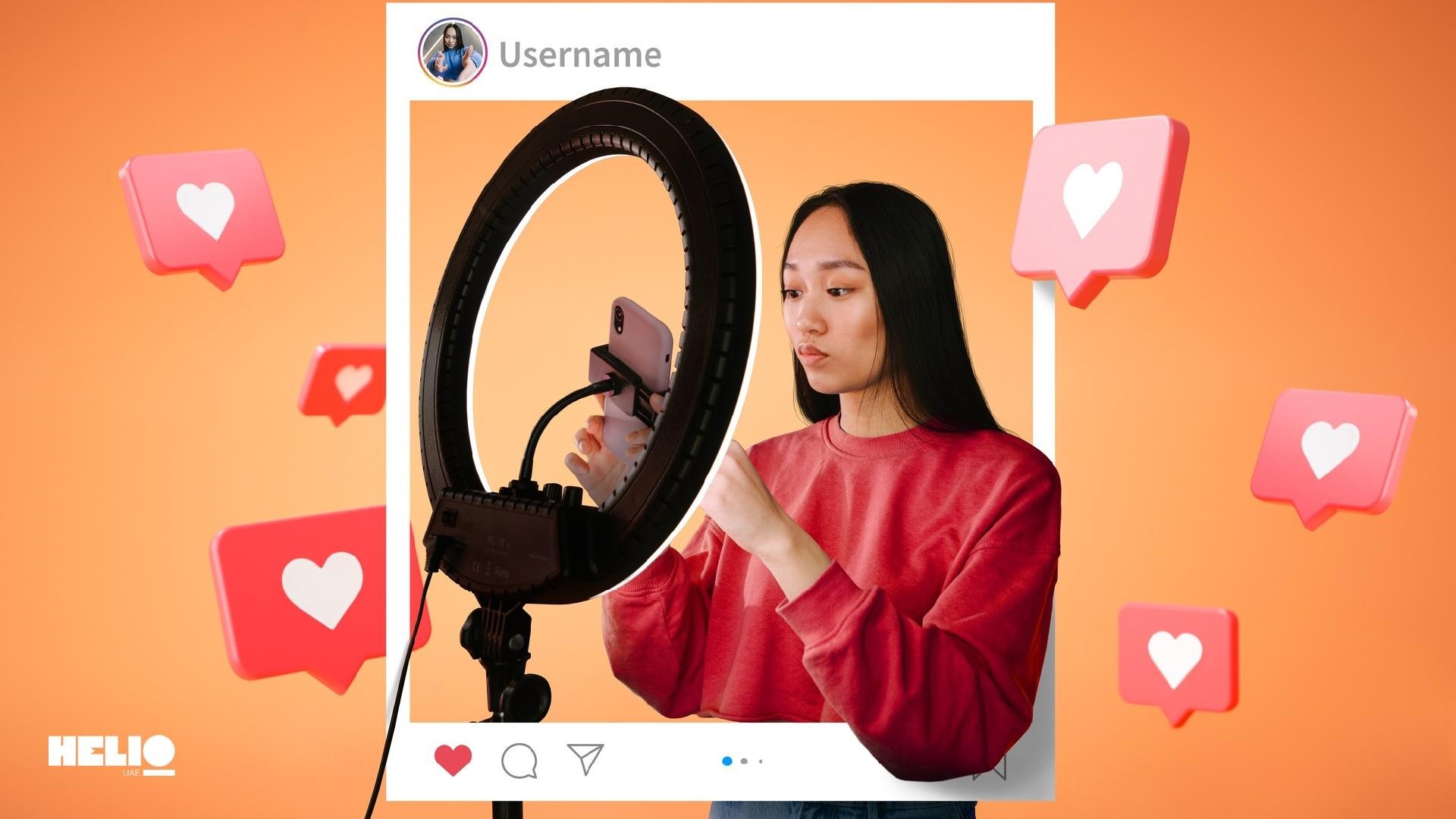Instagram campaigns have evolved into a vital tool in the arsenal of digital marketers, social media managers, start-ups, small businesses, established brands, and local brands, especially in the UAE market. Understanding what an Instagram campaign entails, its various types, and how to set goals can significantly impact your brand’s success. In this comprehensive guide, we will explore different Instagram campaign objectives, provide actionable tips, and share inspiring examples to help you create effective campaigns.
This guide from Helio will help you learn the essential components required to design and execute a successful Instagram campaign. We will delve into the strategic elements that comprise an effective campaign, including defining your target audience, choosing the right type of campaign, setting measurable goals, and crafting compelling content. Additionally, you will be provided with practical examples and case studies that illustrate successful campaigns, offering a clear roadmap to achieving your marketing objectives.
What is an Instagram campaign & Why Setting Clear Campaign Objectives Matters
Setting clear campaign objectives is crucial to the success of any Instagram marketing strategy. Without defined goals, your efforts can become scattered, making it difficult to measure performance and achieve meaningful results. When you establish clear objectives, you provide direction for your campaigns, ensuring every action taken contributes to your overall business goals.
Clearly defined campaign objectives offer numerous benefits, including:
- Focus and Direction: They help you create content that aligns with your brand’s vision and targets the right audience.
- Measurable Success: With clear goals, you can track and measure performance, making it easier to optimize and improve future campaigns.
- Resource Allocation: Well-defined objectives allow you to allocate resources efficiently, ensuring time, budget, and effort are spent effectively.

Types of Instagram Campaigns and How to Achieve Them
Understanding the diverse types of Instagram campaigns is essential for creating content that resonates with your target audience and achieves your marketing objectives. Each campaign type serves specific purposes and offers unique benefits. Here are some of the key Instagram campaign types to consider:
Brand Awareness Campaigns
These campaigns aim to increase the visibility of your brand and familiarize your audience with your products or services. Tactics include using visually compelling content, collaborating with influencers, and utilizing Instagram Stories and IGTV for broader reach.
Engagement Campaigns
Engagement campaigns focus on increasing interaction with your audience. Strategies include running contests, encouraging user-generated content, or hosting live sessions. The goal is to foster a sense of community and boost likes, comments, shares, and overall engagement.
Follower Growth Campaigns
The main objective here is to increase your follower count. Methods can include collaborating with other brands or influencers, running promotional events, and using targeted hashtags. Growing your follower base can help expand your reach and potential customer base.
Lead Generation Campaigns
These campaigns are designed to gather information from potential customers, such as email addresses or other contact details. Effective tactics include offering valuable content like eBooks or webinars in exchange for information and utilizing Instagram’s lead form ads.
Conversion Campaigns
Conversion campaigns are aimed at driving specific actions, such as purchasing a product, signing up for a service, or downloading an app. This type requires clear Calls-to-Action (CTA), compelling content, and often, limited-time offers or discounts to encourage immediate responses.
Re-Engagement Campaigns
Re-engagement campaigns target followers who have interacted with your brand in the past but have since become inactive. Tactics include personalized messaging, special offers, or re-targeting ads aimed at reigniting interest and renewing engagement.
By selecting the appropriate type of Instagram campaign, you can tailor your strategies to meet your unique marketing goals, ensuring that your efforts are both targeted and effective. Incorporating creative concept development in video production can also elevate your campaign content, making it more engaging and memorable for your audience.
Setting SMART Objectives
Specific, Measurable, Attainable, Relevant, Timely Framework for Effective Goal Setting
Setting SMART objectives ensures your goals are clear and achievable. SMART stands for Specific, Measurable, Attainable, Relevant, and Timely. Here’s how to apply the SMART framework to your Instagram campaigns:
- Specific: Define clear and precise objectives. Instead of “increase brand awareness,” aim to “increase Instagram followers by 20% in three months.”
- Measurable: Ensure your objectives can be quantified. Use metrics such as the number of new followers, engagement rate, or website traffic to measure success.
- Attainable: Set realistic goals that are achievable within your resources and constraints. Consider your budget, team capacity, and timeframe when setting objectives.
- Relevant: Align your objectives with your overall business goals. Ensure each campaign goal supports your brand’s mission and contributes to long-term success.
- Timely: Set a clear timeframe for achieving your objectives. Establish deadlines and milestones to track progress and stay focused.

Instagram Marketing Campaign Examples
Examining successful Instagram marketing campaigns can provide valuable insights and inspiration for your strategies. Below are several noteworthy examples of brands executing effective Instagram campaigns:
| brands | Instagram campaigns | Focus | Results |
| Warby Parker | #WarbyBarker and #WearingWarby | User-generated content featuring pets and customers wearing glasses | High engagement with 558k followers |
| Red Bull | #ThisSummer | Extreme sports images and timely hashtags | Reached 1.2 million consumers |
| Starbucks | #RedCupContest | User-generated content around holidays | 40,000 posts on Instagram |
| American Express | #AmexLife | Enviable lifestyle photos | 10 million impressions in 2 weeks |
| GoPro | User-generated content | Impressive photos and videos | High engagement with 17.2 million followers |
| Uber | #BackSeatView | Images from the backseat of Uber | High engagement with influencer partnerships |
| Ben & Jerry’s | Humorous content and engaging naming schemes | User engagement through storytelling | High engagement through humour |
| Aerie | #AerieReal | Real, unedited photos of women | Over $110,000 donated to NEDA |
| Taco Bell | Humorous and eye-catching content | Brand consistency and humour | 1.4 million followers |
| WeWork | Showcase of beautiful workspaces | Gig-economy lifestyle | Growing fan base with 627k followers |
| BMW | #BMWrepost | Customer-generated content | Increased brand awareness and trust |
| Converse | Retro styling and influencer tagging | Engaging retro photos | High engagement through tagging |
| Oreo | Pairing with other lifestyles | Playful illustrations and videos | High engagement with illustrations |
| Apple | #ShotoniPhone | Customer photos and multiple accounts | 23.7 million followers |
| Zara | #IAmDenim | Influencer partnerships | 365,000 views on a campaign video |
Tips for Setting Effective Campaign Objectives
Here are some helpful tips:
Understand Your Target Audience
Understanding your target audience is crucial for setting practical campaign objectives. Conduct detailed research on your audience’s demographics, interests, and behaviours. Use tools like Instagram Insights, Google Analytics, and social media listening tools to gather valuable data.
Tailor your campaign objectives to address your audience’s specific needs and preferences. For example, if your audience is interested in sustainable products, create campaigns that highlight your brand’s eco-friendly initiatives.
Utilize Data and Analytics
Leverage data and analytics to measure and track your campaign performance. Use tools like Google Analytics, Facebook Ads Manager, and Instagram Insights to monitor key metrics and gain insights into your campaign’s effectiveness.
Regularly analyze your campaign data to identify areas for improvement. Make data-driven adjustments to optimize your campaigns, such as tweaking your targeting, adjusting your ad creatives, or refining your messaging.

Align Objectives with Business Goals
Ensure your marketing objectives align with your overall business strategies. Each campaign goal should support your brand’s mission and contribute to long-term success. Regularly review and adjust your objectives to stay aligned with your business goals.
To keep your campaign objectives in line with your business objectives, review them frequently and make necessary adjustments. By doing this, you can make sure that your marketing campaigns stay targeted and productive and provide significant outcomes for your company.
Budget Considerations
Set realistic campaign objectives based on your available resources. Consider your budget, team capacity, and timeframe when setting goals. Prioritize objectives that can be achieved within your constraints while delivering maximum impact.
Prioritize your campaign goals based on your budget constraints. Focus on objectives that offer the highest return on investment (ROI) and align with your overall business goals. Allocate resources strategically to maximize the effectiveness of your campaigns.
Common Pitfalls to Avoid
When setting campaign objectives, be aware of these common pitfalls:
Setting Unrealistic or Vague Goals
Avoid setting unrealistic or vague goals that are difficult to achieve or measure. Ensure your objectives are specific, measurable, attainable, relevant, and timely (SMART) to improve your chances of success.
Failing to Align Objectives with Business Goals
Ensure your campaign objectives align with your overall business goals. Failing to do so can result in wasted resources and missed opportunities. Regularly review and adjust your objectives to stay aligned with your brand’s mission and long-term strategies.
Neglecting to Measure and Track Campaign Performance
Regularly measure and track your campaign performance to identify areas for improvement. Use data and analytics to gain insights into your campaign’s effectiveness and make data-driven adjustments to optimize results.
Setting Effective Campaign Objectives for Instagram with Helio
Setting clear and well-defined campaign objectives is essential for successful Instagram marketing. By understanding your target audience, utilizing data and analytics, aligning objectives with business goals, and avoiding common pitfalls, you can create effective campaigns that drive meaningful results for your brand.
Remember, the key to success lies in continuous improvement and adaptation. Regularly review and adjust your objectives to stay aligned with your business goals and maximize the impact of your Instagram campaigns.
Let’s Make It Happen!
Ready to take your Instagram campaigns to the next level? Helio marketing and advertising company can help you create and execute effective campaigns that will reach your target audience and drive results. Sign up now and start achieving your marketing goals today.





